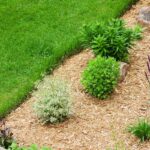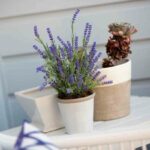White perennials are perfect for a summer garden. They bloom every year and flower until the end of the season. If you want flowers that last that long, then you’ll want to choose iceberg rose, Annabelle hydrangea, or Japanese anemone. There’s plenty more to consider as well.
You have plenty of options if you want to grow white perennials at home.
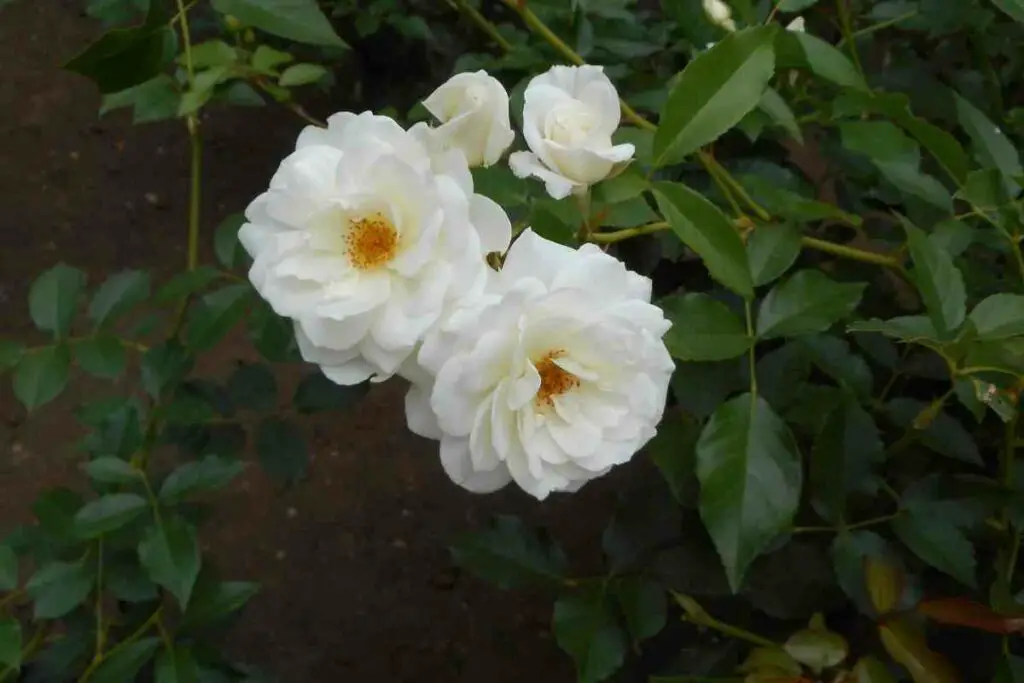
Several species can bloom throughout summer, so you’ll want to choose the flowers you like the most.
Table of Contents
What White Perennials Bloom All Summer?
Flowers are wonderful to have during the summer.
They can make your space feel fresh and beautiful and always smell amazing.
If you’re going to put in the time and effort to grow perennials, you’ll want to make sure they can last the entire season in bloom.
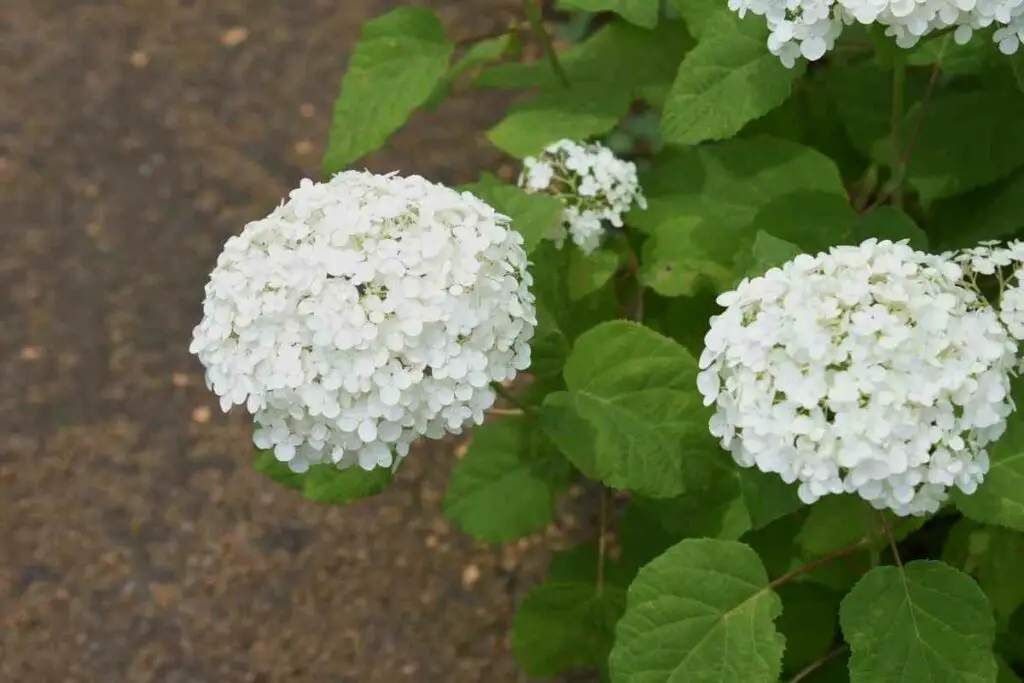
If you choose a perennial that blooms all summer; you can enjoy them longer.
These flowers can easily spruce up your garden, walkways, and borders.
White tends to stand out and make other colors “pop,” too, so you can use them with other blooming flowers for outstanding results.
Here are eight of the best white perennials that bloom all summer long.
1. Iceberg Rose
Iceberg roses are very easy to grow.
They require full sun for at least six hours per day and prefer well-drained soil. Iceberg roses are stunning while blooming, so you’ll enjoy having them around for the entire summer.
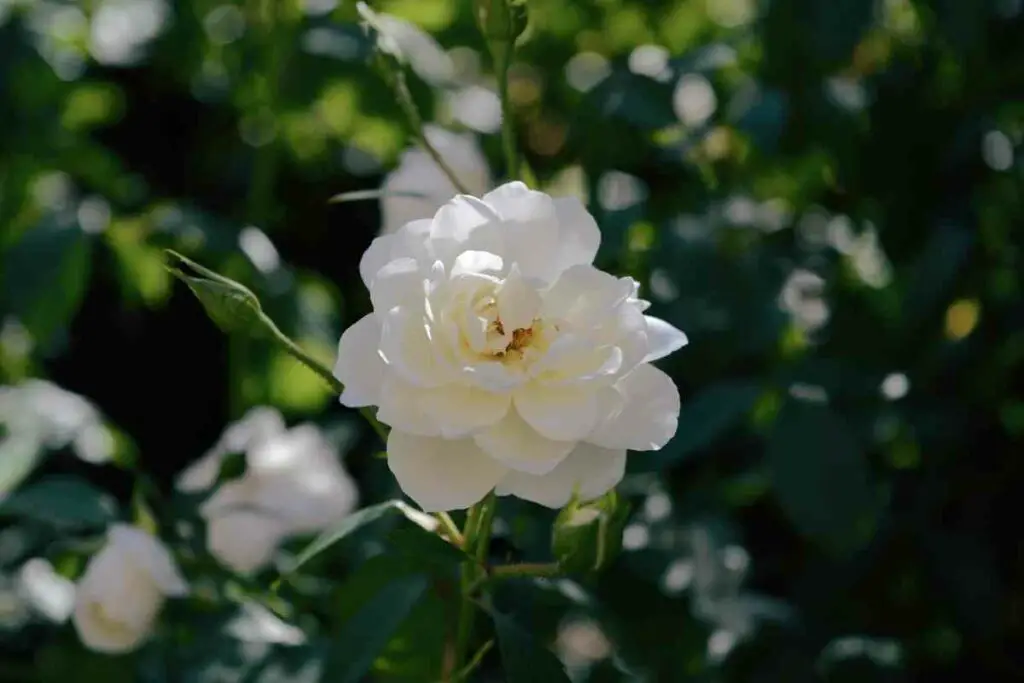
Since they require direct sunlight, they’ll do great outside in your flower bed. Ensure the soil has a pH level between 6.5 and 7.
Then, plant the roses in holes at least 18 inches wide. The hole you create also needs to be deep enough for you to cover the roots easily.
Once the iceberg roses become established, you should spread compost or manure over the top of the soil.
When these roses have access to the proper nutrition, they produce large, full white blooms. The more nutrition they have, the more beautiful they’ll be!
The rose bush will bloom all summer, with blossoms covering the entire shrub. If you have space to put in a trellis, you can even use climbing iceberg roses with great results.
2. Annabelle Hydrangea
Annabelle hydrangeas require different care than the above iceberg roses.
These flowers do well in partial and full sun while getting at least five hours of direct sunlight. If you live in a cold place, you can stay in the sun all day. Although, they prefer shade in hotter areas.
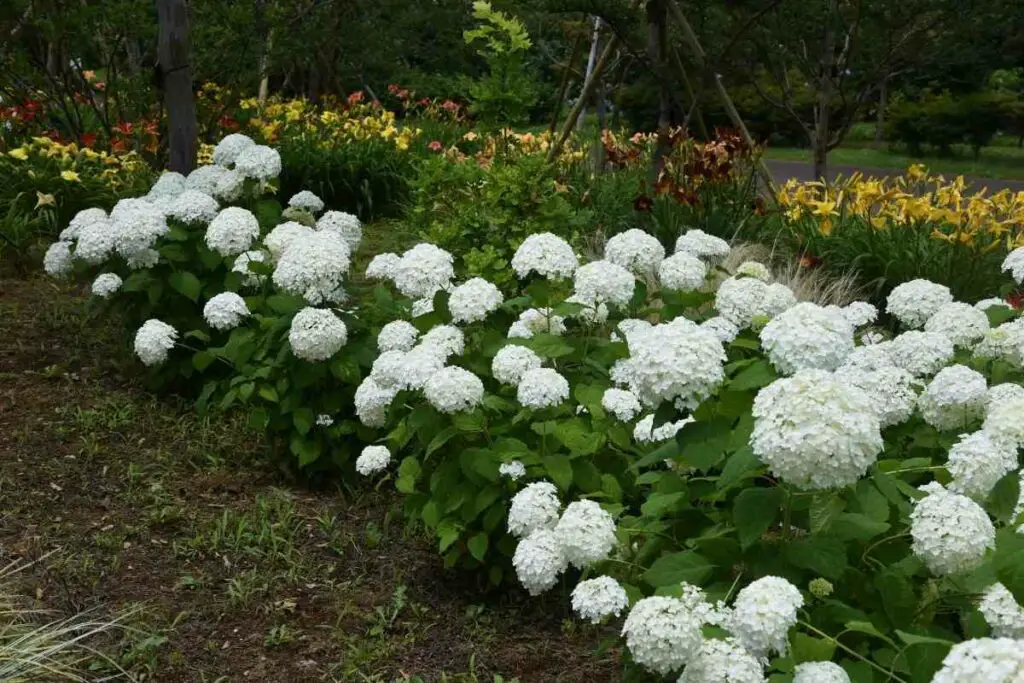
The blooms on the Annabelle hydrangea are so large and full that they collect water during rain. When that happens, the flowers can fall over.
You can also prune the Annabelle bush each year. Doing so helps the plant form stronger branches with time. The flowers also become smaller, but they still look beautiful.
These flowers are very strong bloomers, so that they can handle a lot of pruning.
You’ll want to prune about 18 inches off them for the best results.
If you don’t like how this looks, prune the bush down to the ground, and next year you’ll have a fresh start with full blooms.
Next, you can also try adding a fence near the plant. It blocks some of the rain and can offer support to the larger blooms that tend to fall over.
In short, the Annabelle hydrangea is stunning throughout the summer months.
3. Japanese Anemone
The Japanese anemone is a white flower that blooms during the late summer and into the fall.
The blooms add a fresh, bright appearance to any garden.
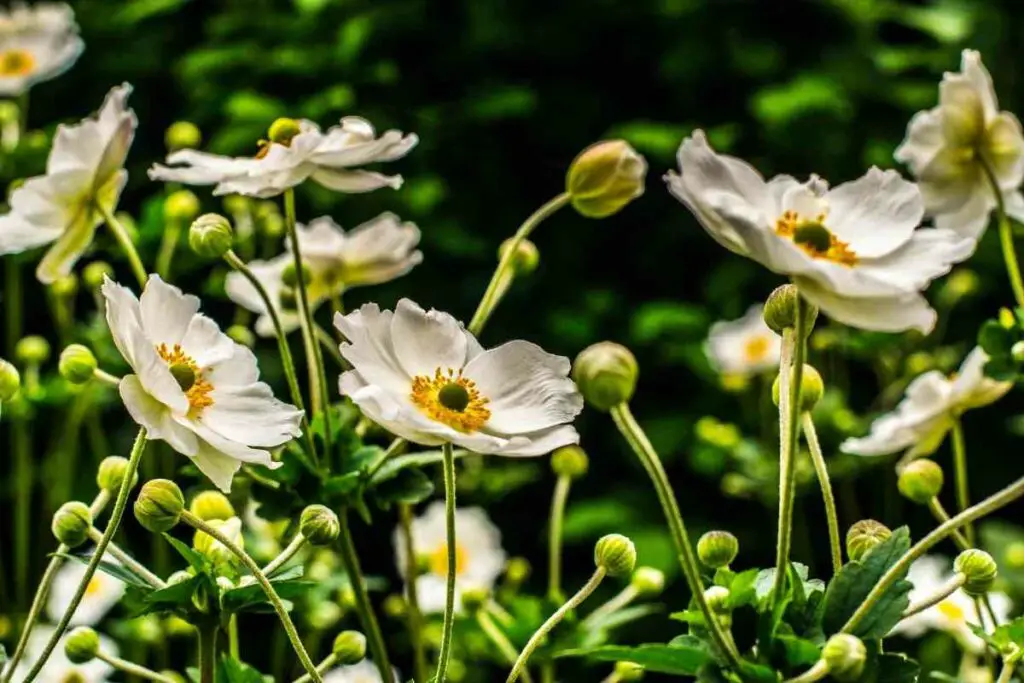
If you want to take great care of them, offer the plant moist yet well-draining soil. It grows well in both part and full sun.
You’ll want to cut just below the flower to “deadhead” it for the best results. Doing so will allow the plant to form even fuller blooms throughout the summer.
During the Summer – You’ll want to water them more frequently than you were before. These plants do best when they have consistently moist soil.
The Japanese anemone offers stunning, crisp white blooms for your summer garden. You’re sure to love them!
4. Shasta Daisy
Shasta daisies are fun and capture the essence of summer.
They look like traditional daisies, except they’re larger and have fuller blooms.
Plus, they stay in bloom the entire season. The flowers prefer full sun and well-drained soil. They have long stems, perfect for cutting, collecting, and adding to any vase or bouquet.
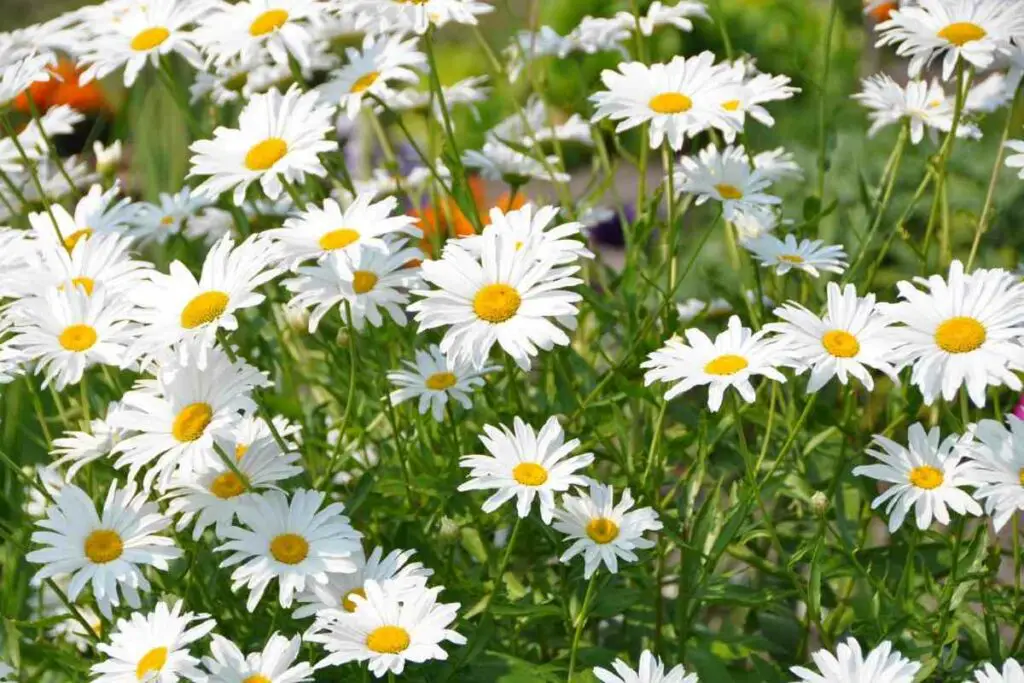
As an added benefit, Shasta daisies are easy to take care of once you plant them. You must “deadhead” the flowers to ensure the returning blooms are full and vibrant.
The plant will focus on producing larger, better blooms when you do. Plus, cut flowers are very long-lasting in vases.
The flowers won’t finish blooming until September, so you’ll have a very long time with them. It’s best to plant these daisies in a sunny space so they continue blooming yearly.
If you want an easy-to-care-for white perennial, these daisies are the best option.
5. Cupflower (Nierembergia)
Cupflower, or nierembergia), are great in very dry areas.
They are drought-resistant and can stand up to many diseases and pests. They’re the best option for you if you need a very hardy, white perennial.
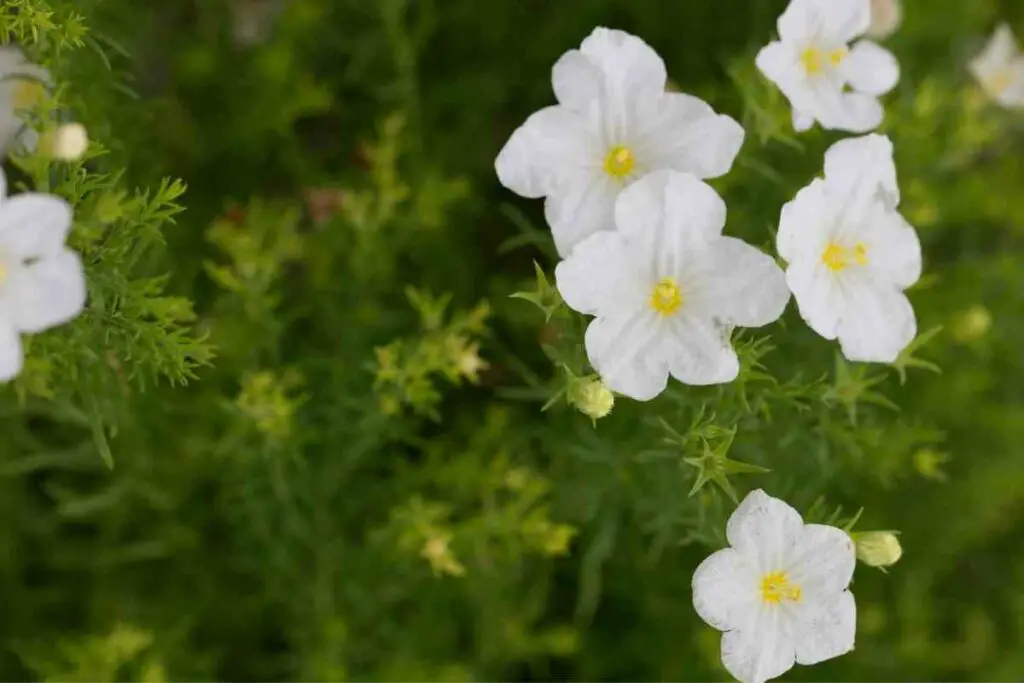
Cupflowers require full sun and well-drained soil to grow effectively.
These tiny white blooms get their name from their bowl-like shape.
You can find the cupflower in many colors, including blue, purple, and white! Many gardeners love to keep them in containers like hanging baskets since the stems are very light and thin.
Many people also recommend that you try planting them along a garden path or fence because they look great when placed near strong borders.
In Short – The cupflower is another stunning option. Most people love these cute flowers, and there are many ways that you can plant them around your home.
6. Candytuft
Candytufts love sunny areas and prefer to have well-drained soil.
They struggle in muddy places, so you don’t want to water the soil too much.
Pollinators, like butterflies and bees, love candytufts! If you need to attract pollinators to your garden, it’s the perfect summer choice.
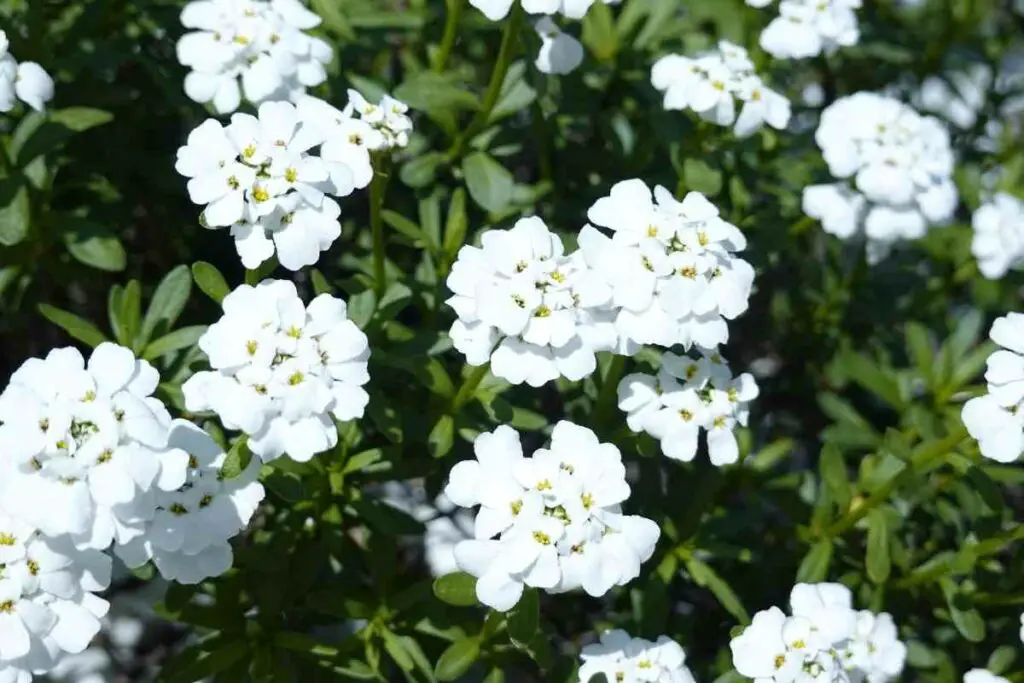
Candytufts form beautiful oblong blooms in large clusters. They do require regular pruning to keep their beautiful shape. Once the flowers become well-established, they resist droughts as well.
You can grow your flowers in small containers or start them outside after the frosts are over.
Make sure to keep the seeds moist, then continue with normal watering routines once they begin to sprout.
To get the best blooms, use a small amount of phosphorus-rich fertilizer in the spring.
You can try watering them less if it doesn’t bloom as much as you would like. The plant is very sensitive to overwatering.
7. Flowering Spurge
The flowering spurge forms blossoms in a round of five white, tiny flowers.
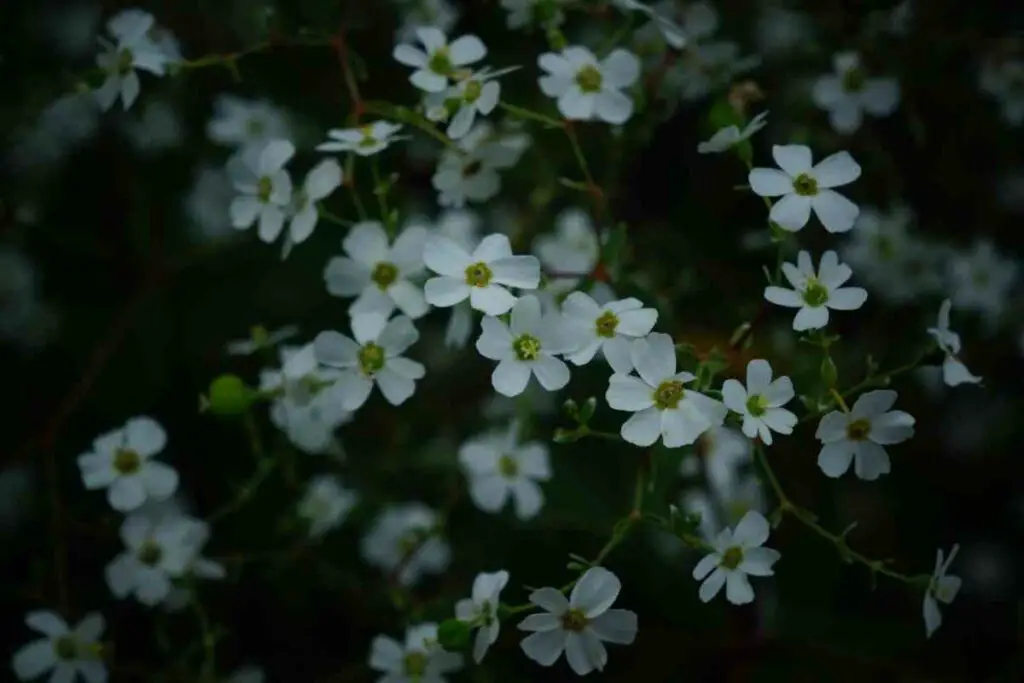
It likes dry soil and often grows naturally on prairies, which we call the baby’s breath of the prairie. The spurge can grow to three feet and is fine with either partial or full sun.
The centers have a green section, making the white petals look brighter.
You can expect these flowers to blossom in early summer and stay in bloom for the entirety of the season.
These flowers are beautiful and worth growing- we’re sure you’ll enjoy having them in your garden.
8. Phlox David
Phlox David flowers are very mildew resistant and are extremely bright in color.
They’re also very fragrant and will make your entire property smell wonderful. The flower grows in full sun in most environments, although they like partial shade in very sunny, hot places.
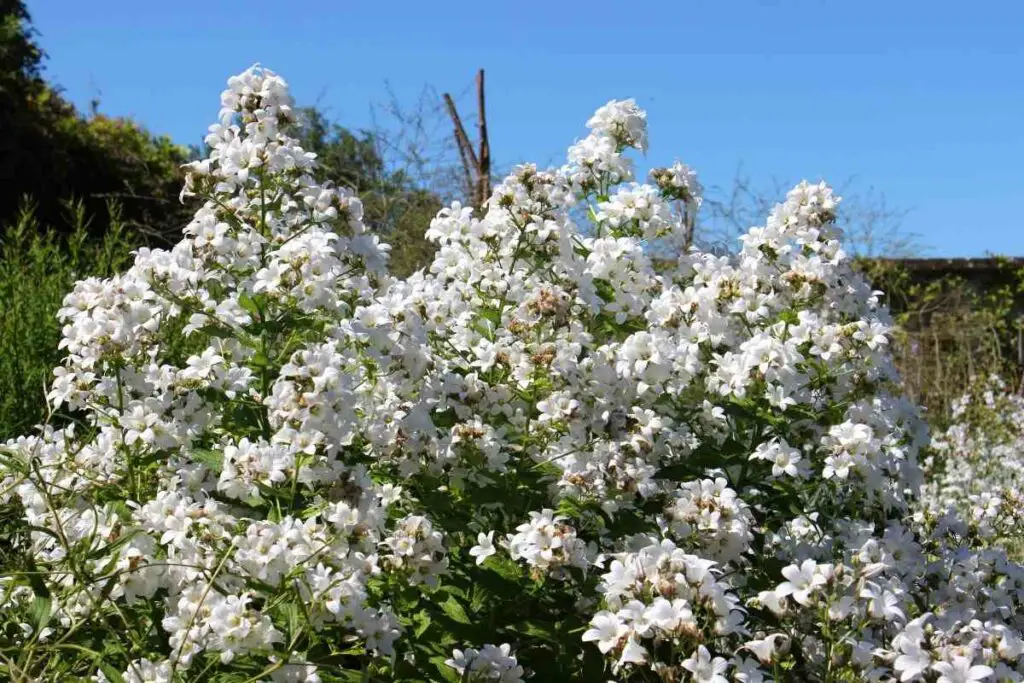
The plant also needs to have well-drained soil.
The plant also has the benefit of attracting hummingbirds and butterflies to your property.
These creatures are a lot of fun to watch and are even easier to see among the clear, white blooms of the flower.
These blooms represent harmony, unity, and partnership. If you’d like to convey that message to someone in your life, they’re a great choice for your garden.
The Phlox David is another wonderful option for growing white perennials over the summer. Many gardeners find them easy to care for as well.
Why Choose White Perennials for the Summer?
There are plenty of reasons to grow white perennials that bloom in the summer.
During this time of year, your garden will be vibrant and green, making the white flowers stand out even more.
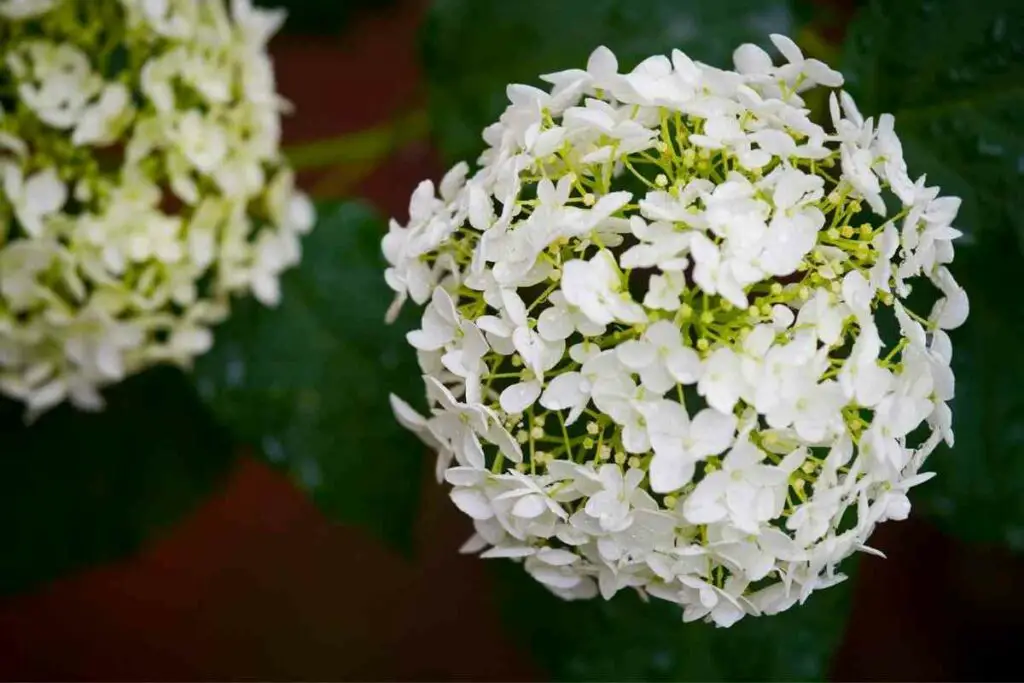
Perennials can produce long-lasting blooms that can stay the entire summer and return the following year.
If you take care of them properly, you’ll only have to buy them once, and you can still enjoy the flowers each summer.
White is the perfect color to add to any garden too.
We associate white flowers with purity and innocence, plus sympathy. You can offer this message to loved ones by gifting them some of your flowers.
Overall – If you want to add white perennials to your garden, one of the above eight options is excellent!
Conclusion
These white flowers are perfect to brighten anyone’s summer garden and make it stand out from the rest.
Our recommendation is the iceberg rose, as this unique flower looks absolutely beautiful and is easy to care for. Key points of care; six hours of sunlight a day and well-drained soil.
Our second recommendation is Shasta Daisey, this common flower is stunning and is great for flower bundles and vases due to their long stems. Key points of care; well-drained soil and deadhead to ensure returning bloom is vibrant.
Please ensure to do your own research before planting to receive the best results.
- How to Dry Basil Leaves: A Professional Guide
- Is an Avocado a Fruit or Vegetable? Simple Answer and Explanation
- Does Pineapple Have Seeds? Exploring the Anatomy of Pineapples
- Blooming Through Winter: Can I Grow Vegetables Indoors in the Winter?
- What Can You Grow in a Greenhouse All Year Round: A Guide to Year-Round Greenhouse Gardening
- Are Blueberries Blue? Debunking the Myth of Their Color












